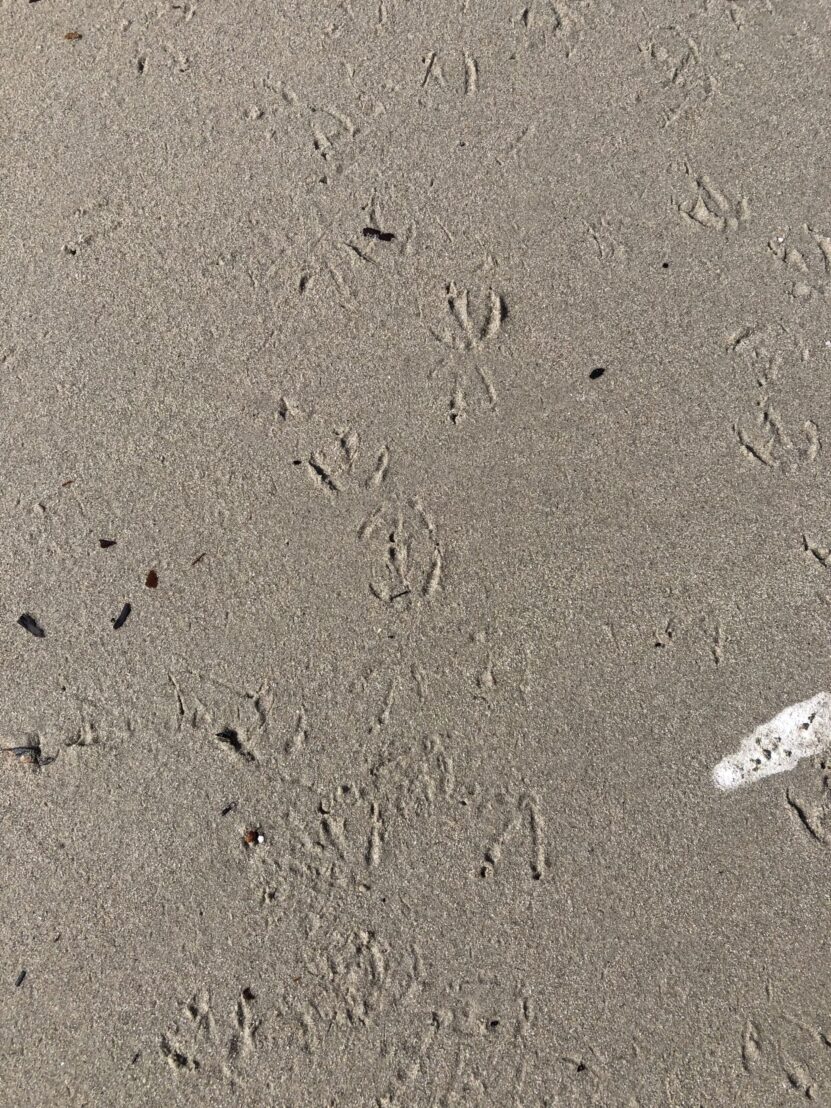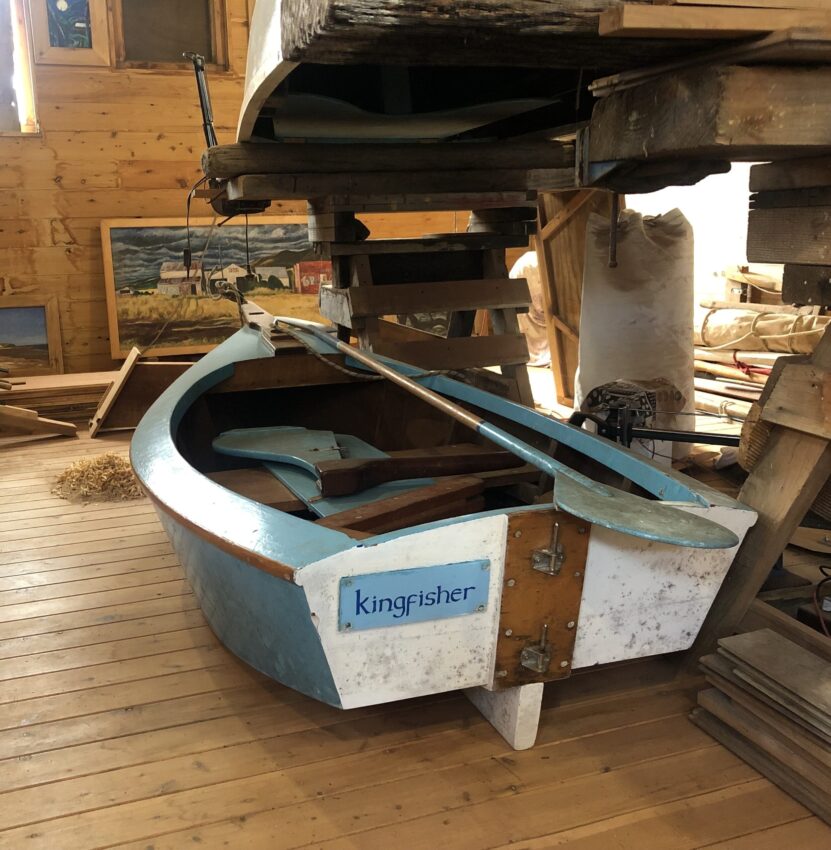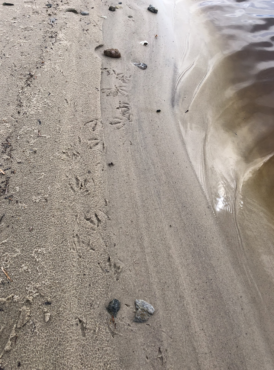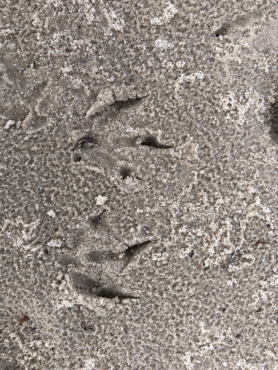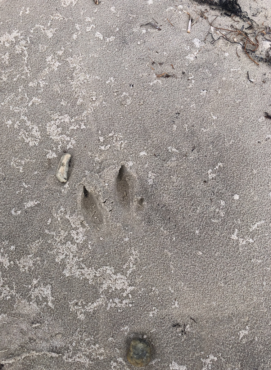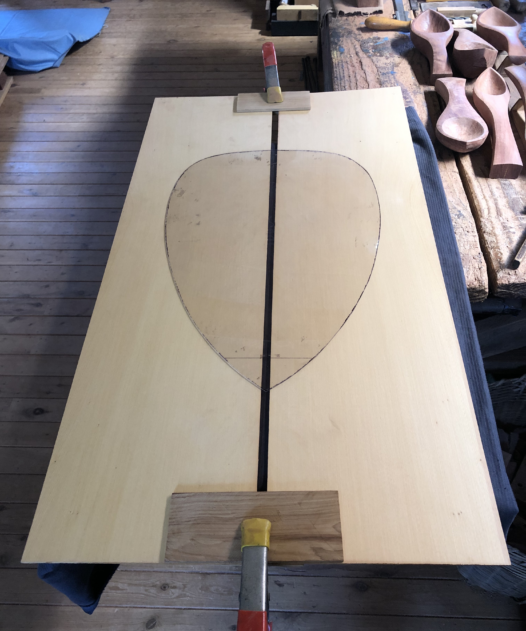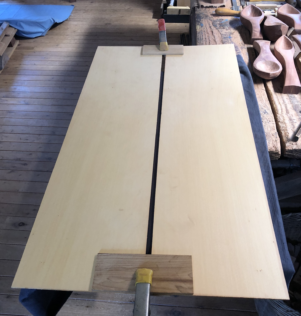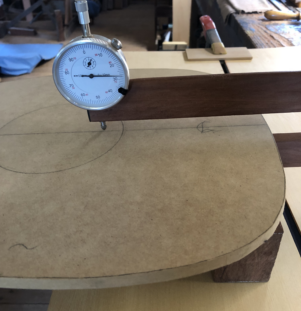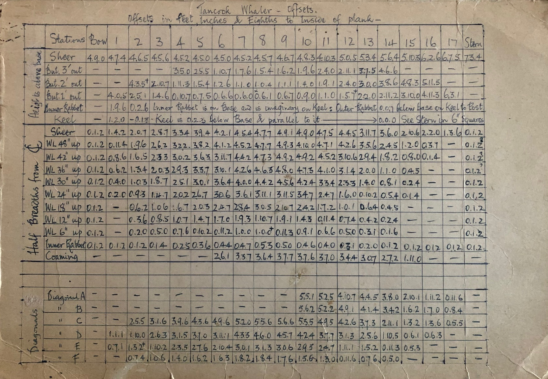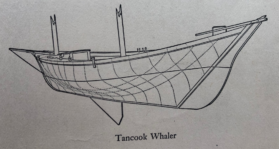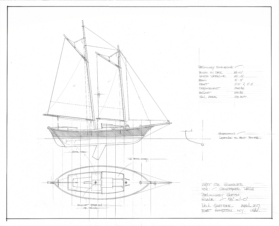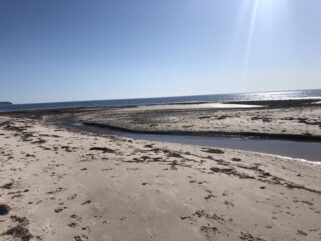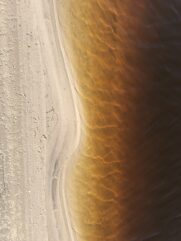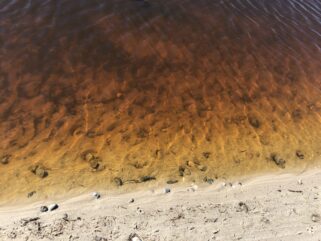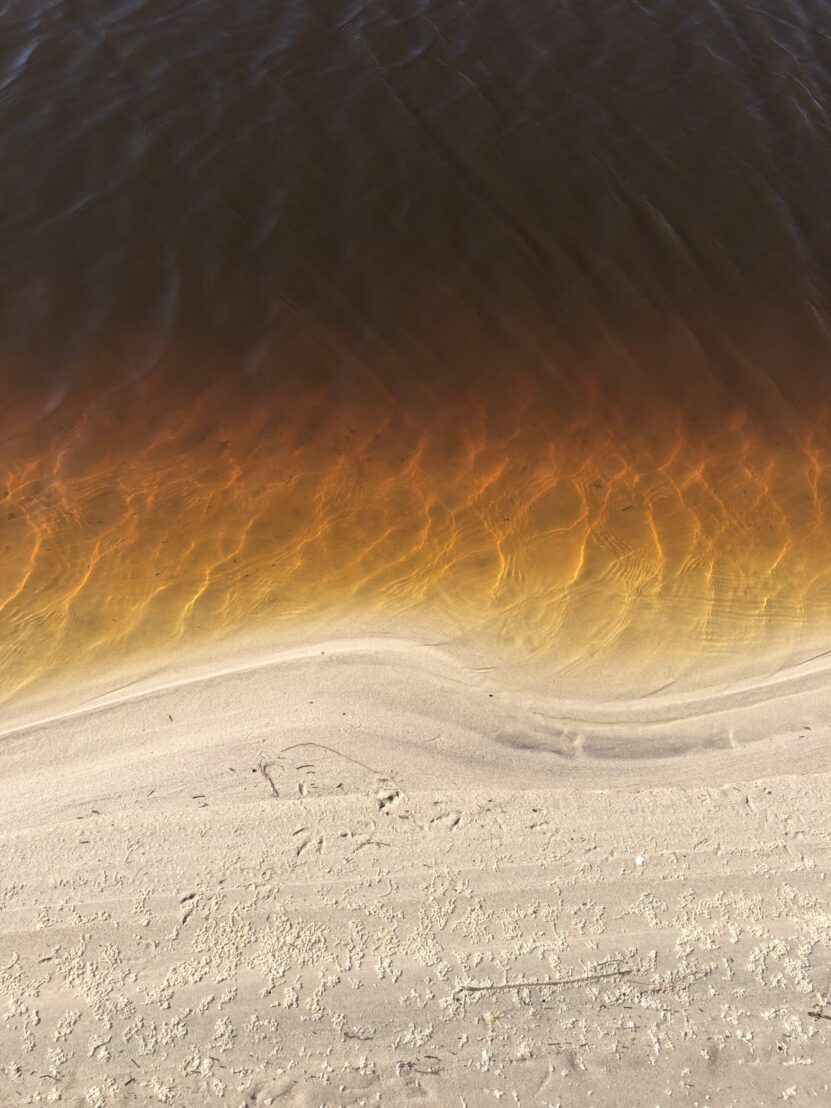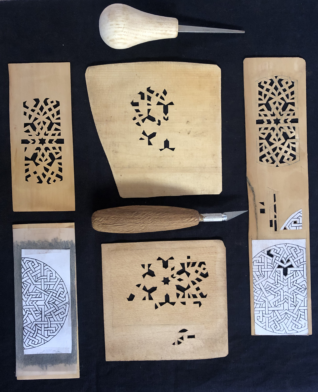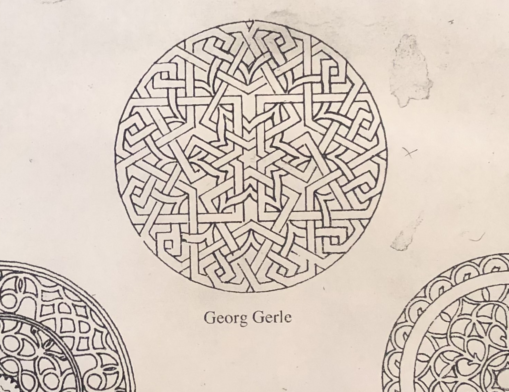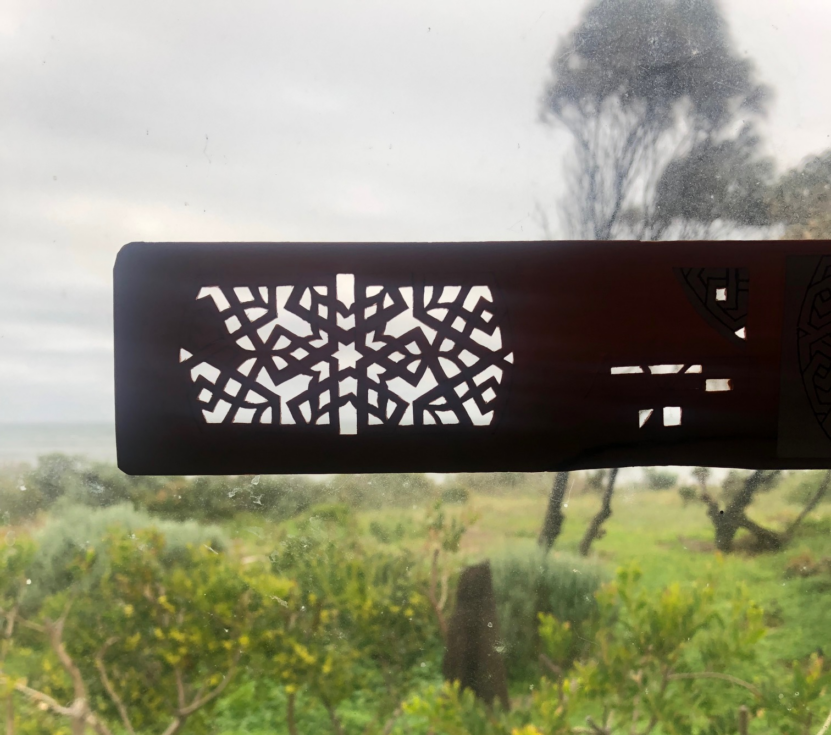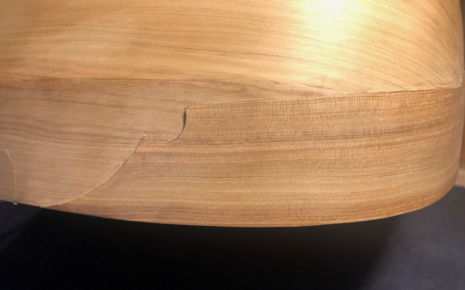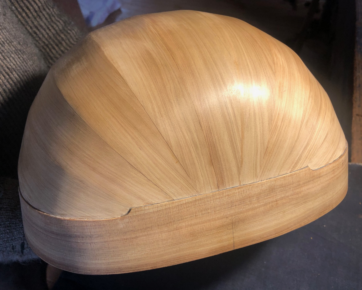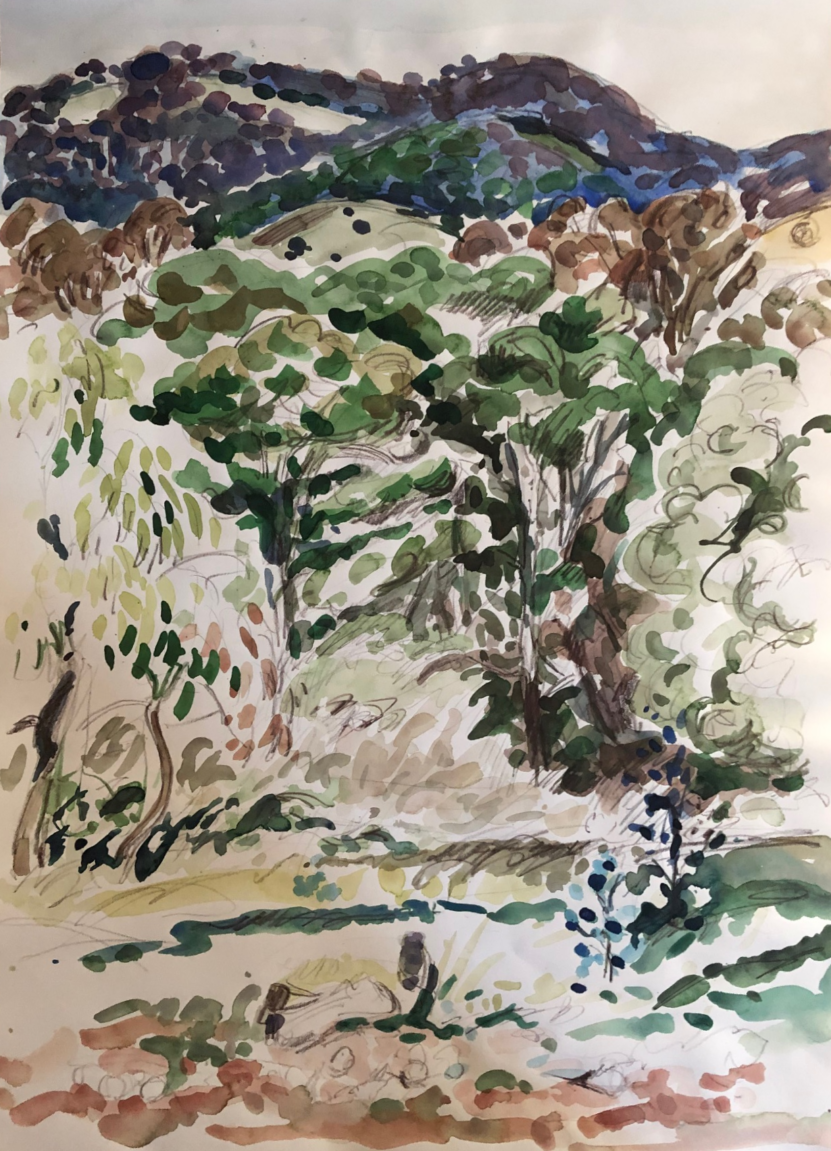Red-capped Dotterels by the Estuary….
Author: Chris Wells
Kingfisher
This little skiff is a replica of Dad’s Silver Mist of long ago. She is not as sturdy as Silver Mist – and, it must be said, not quite as heavy.
Dad felt that a bowsprit and fore-stay would be useful additions. Sam and I might install a miniature jib, cut from calico, when the time is right.
Kingfisher is back at Lady Bay, to help train the next generation of mariners….
Signs and Symbols
Soundboard 1
Here is the Huon Pine soundboard. I will glue the two lengths edge to edge, cut the resulting board more or less to size – and then plane it down to about 1.6 mm.
Thereafter, a cabinet scraper comes into play: centuries of experience has established a formula for the thickness, which changes from edge to centre. The area reserved for the George Gerle rose will be about 1.2 mm thick.
You can see from the photo why my home-made gauge is made the way it is: I can use it to check and double-check each and every point on the soundboard. The various thicknesses are meant to enhance the quality of sound, or – we could say- the resonance.
Another finicky task – but worth doing properly….
Tancook 1
Long ago Dad copied these offsets (see below) onto a scrap of cardboard – clearly as a statement of intent. He found them on page 165 of his maritime bible: American Small Sailing Craft by Howard I Chapelle, first edition, published 1951.
Tancook Whalers were not used to hunt whales. Chapelle describes their purpose thus:
The requirements of the Tancook Island boats were severe. This large island is in the mouth of Mahone Bay, some thirty miles southwest of Halifax. It had no natural harbour, and became a settlement only because it was conveniently close to the fishing grounds. The boats were required to be moored off the island without shelter, and they also had to face severe weather offshore. The prolonged morning calms in the summer made it often necessary to row the boats out to the fishing grounds. The distance the boats were required to go to sea in fishing, and their value in transportation to and from the island, made it desirable that they be craft of some capacity.
In 2017 we asked Paul Gartside, well-known boat designer, to draw up a Tancook Whaler proposal for our consideration. You can find his website here:
https://www.gartsideboats.com/
Of course, we liked what we saw, and subsequently commissioned the full set of construction plans – hence our search for abandoned lengths of timber.
Chapelle – who was cautious about bestowing (unqualified) praise – has this to say of Dad’s ‘castle in the air’:
The lines of the Tancook Whaler were remarkably sharp; the midsection showed a very hollow garboard and hard bilge; the wide plank keel was another feature. The boats sat low in the water and had a very graceful sheer. Altogether the Tancook Whaler was one of the most handsome of the double-enders used on the Atlantic coast….
I return to that paragraph often.
Estuary 7
We were up at the estuary last Saturday, and Sam did well to capture some beautiful images on his miniature phone camera. Sunlight slanting from the west, water flowing into the sea, and ripples moving upstream all came together at the right time.
Those hieroglyphics in the sand must be evidence of a Lady Bay ‘news cycle’ beyond our ken. If ever we come to decipher them, I imagine there will be little else to accomplish.
George Gerle Rose
They say that practice makes perfect – or at least better – so I’m giving it a shot. I won’t be cutting into the soundboard until I am confident of a worthwhile result.
Or to put it another way: the Wabi Sabi philosophy is not going to save me from a charge of incompetence.
There are countless rose designs. I have chosen the original rose used for George Gerle’s six course lute (16th century), of which my own lute will be a humble replica. The Lute evolved from the Arabic Oud, and the Gerle rose was designed to reflect that inheritance.
Samples in the photo are of Huon Pine, King William Pine and European Spruce. I am inclined to the Huon Pine: it cuts sweetly, carves sweetly, and is in every respect a beautiful wood.
Lute Rose 2
Endclasp 2
This seems to have worked out ok. I am still cleaning up excess glue. The top edge of the endclasp is planed flush with the rim of the lute body – and both ends shaped so that they can eventually merge with the curves of the soundboard.
Next task is, indeed, construction of a soundboard. I plan to make one from Huon Pine; another from King William Pine; thereafter, cut a Rose decoration in each – and then form a judgement, or perhaps toss a coin: whatever seems appropriate….
